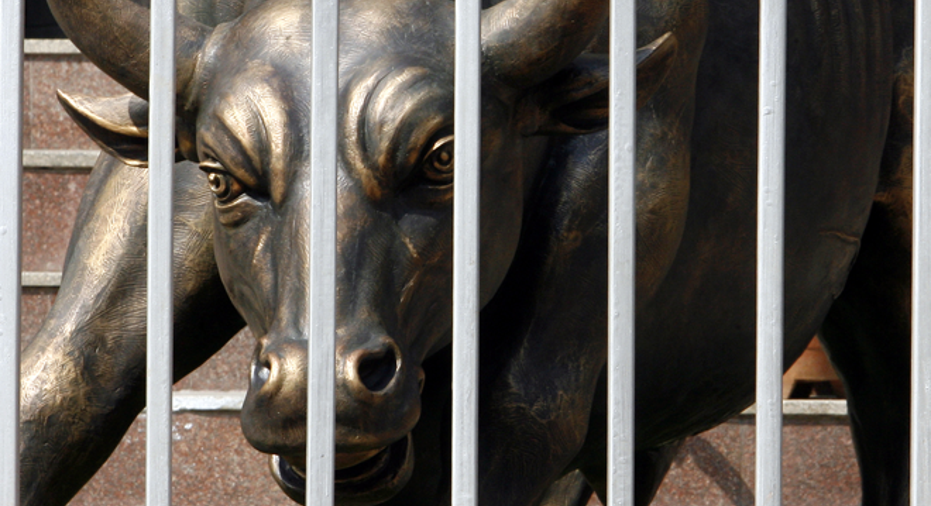PIMCO Sees Tame Bulls, Timid Bears Ahead

The good news: The U.S. has recovered from the worst financial crisis since the Great Depression and the eurozone has managed to avert the sovereign debt debacle that threatened to tear the currency bloc apart. The bad news: The post-crisis world is going to be quite dull for investors and will probably mean the end of bull markets as we know them.
At least that’s the view from Pacific Investment Management Co., better known as PIMCO. The bond giant, which famously penned a report called “The New Normal” in 2009, followed up Tuesday with a research note entitled “The New Neutral.”
The Federal Reserve, European Central Bank and other monetary policymakers across developed markets were forced to cut short-term interest rates to historic lows (the Fed’s main tool is still effectively at 0%) in a bid to fend off a full-fledged economic collapse in 2008. The Fed also launched numerous unprecedented programs aimed at boosting economic growth, including several vast asset-purchase programs.
The monetary policymakers were aided by what PIMCO founder and Chief Investment Officer Bill Gross called a “large dose” of accommodative fiscal policy.
“The good news is that, as a result, the global economy avoided depression and deflation. But that’s all they did or could reasonably do,” he said in the report.
“The reality is that now, five years after the global financial crisis, average growth in the global economy is modest and the level of global GDP remains below potential.”
Additionally, PIMCO notes global debt outstanding is at record highs in dollar terms, and represents a larger share of GDP than it did before the financial crisis in 2007. On top of that, China is likely to have a tough time controlling its $1.6 trillion “shadow banking” system.
‘Exceptionally Low’ Reward
Considering the lackluster economic climate, particularly for the developed world, coupled with still-perilous debt markets, PIMCO reckons that as central banks normalize policy and move back to a “neutral” stance, real interest rates are likely to be stuck around 0%.
Real rates – as opposed to nominal rates – take inflation into account. The higher the inflation, the more it detracts from the real rates. For example, the benchmark five-year Treasury bond currently yields about -0.24% on an inflation-adjusted basis, according to data from the Treasury Department.
“If real neutral policy rates are centered at 0.0% or less for the next three to five years the investment implications are significant because the level of short term rates forms a fundamental component of all asset prices,” the report said.
Gross said “asset markets have gone too far in believing that central banks can even approach policy rates that seemed ‘neutral’ for decades prior to (the collapse of) Lehman in 2008.” He doesn’t buy the consensus estimate among many economists that nominal rates could tick up as high as 4% before the end of the decade, with real rates potentially striking 2%.
Gross said the results of lower-than-expected short-term rates are probably a double-edged sword. On one hand, rewards for investors are probably going to be “exceptionally low when compared to historical norms.” However, the tame rewards will probably be accompanied with dramatically lower risks, and less turbulence, than Wall Street has seen in recent years.
RIP Bull Markets?
Strikingly, Gross, whose firm manages $1.94 trillion in assets, said taken together, this trend probably implies “an end to bull markets as we’ve known them, but no perceptible growling from the bears.”
If you look at how U.S. equities have performed this year, you can see Gross’s point. The broad S&P 500 is trading at record highs, having broken the 1900 mark for the first time ever on Tuesday. But the broad-market barometer is up a paltry 2.86% on a year-to-date basis. The Nasdaq Composite -- which is home to many once high-flying growth stocks -- is down 0.62% for the year.
These tepid moves come on the back of big gains for stocks last year. The S&P tacked on an eye-popping 29.6% in its best year since 1997. The Nasdaq spiked 38.3% last year.
Gross sees a much less exciting future for the Street as global economic growth fails to reach its potential and inflation remains too tame for comfort. He sees gains of about 3% for bonds over the next three to five years, and about 5% for stocks.
That probably won’t be enough to satisfy investors. Gross urged them not to “give up on actively managed bonds” – PIMCO’s bread and butter. He said the Newport Beach, California-based asset manager will be focused on choosing fixed income and equity investments using a “bottom-up” approach. It will also offer a range of more complex alternative plays.
The Allianz subsidiary has a long way to go in its road to recovering investor confidence after a soured bet on Treasury bonds led its massive Total Return Fund to post a total-return loss of 1.92% last year that led to the biggest redemptions in mutual-fund industry history.
The abrupt departure of CEO and co-CIO Mohamed El-Erian early this year has also dented confidence in the firm.